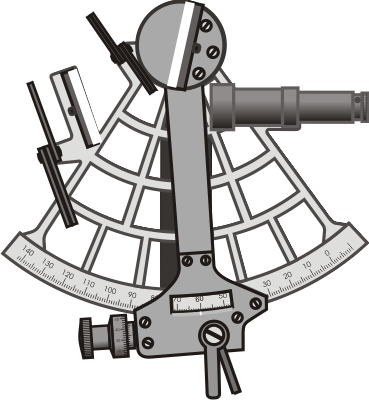
I must go down to the seas again, to the lonely sea and
the sky,
And all I ask is a tall ship and a star to steer her
by....
From "Sea Fever" by John Masefield
The Navigator Module
There are two overlapping but separate skill sets in
celestial nav: navigating across an ocean, and passing the
Sail Canada exam. You choose the skill set you want by
taking one - or both - of:
* The Navigator Module
* The Sail Canada Exam Module
The Navigator Module will be fast-paced, and intensely
practical, with the objective that you will take 14 actual
sextant sights over the course of the 15 hours of the
module.
After an initial orientation to the concepts of
celestial navigation, and to the sextant itself, we will
establish a rhythm of going outdoors to take a sight, then
coming back into the classroom to plot that sight.
There are slightly different approaches that ocean navigators must use for the different types of celestial object, be it:
* star,
* planet,
* moon, or
* sun.
You will learn all the techniques, and take sights of each
of these types of object. The course dates have
been thoughtfully selected to give us the best possible
selection of celestial objects to use for the course.
When you finish this module, you will be able to navigate
across any ocean on earth using no more hardware than your sextant
and a wristwatch.
Sailors are interested in redundant systems. They
have:
* an extra halyard in case the halyard holding up
the mainsail parts;
* a manual bilge pump in case the electrics pack it
in;
* a manual tiller in case the steering gear breaks.
Celestial navigation is the fully redundant backup system
to GPS.
That said, GPS is of course going be our primary
navigation method, and you will learn how to maximize its
usefulness.
For instance, we will touch on the dangers of electro
magnetic pulse (EMP) from lightning strikes, and the
effective ways (and ineffective ways) of
protecting your equipment with a Faraday cage. The
point is not just to use a sextant, but to get home
safely. This course will ensure that you have all
the navigational tools at your disposal to do just this.